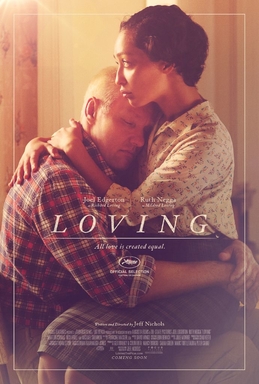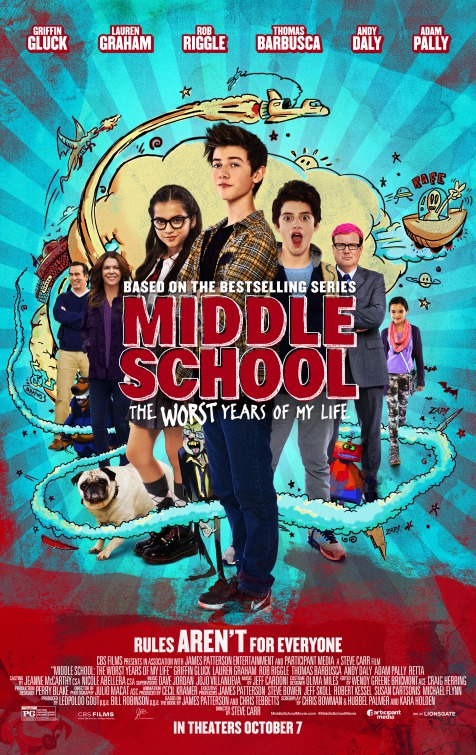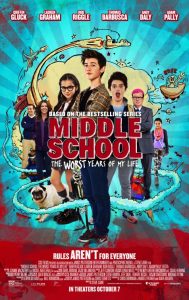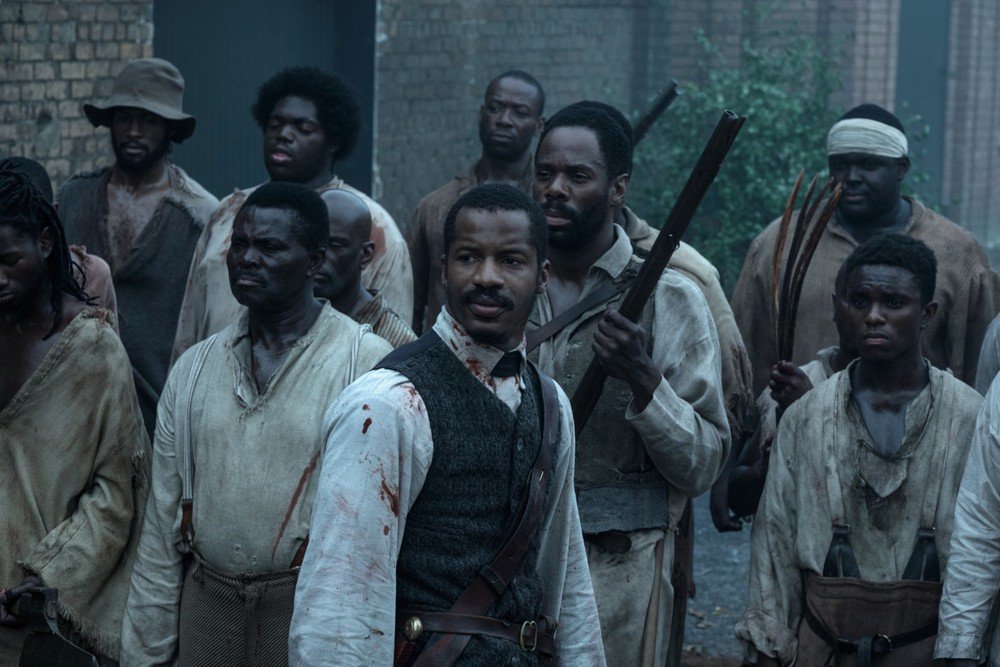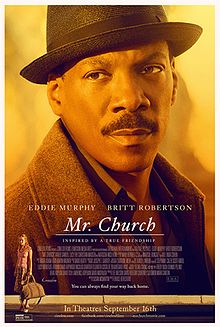Loving
Posted on November 10, 2016 at 5:21 pm
A-| Lowest Recommended Age: | Middle School |
| MPAA Rating: | Rated PG-13 for thematic elements |
| Profanity: | Racist epithets |
| Alcohol/ Drugs: | Some alchohol |
| Violence/ Scariness: | Racism, some shoving, child hurt in accident |
| Diversity Issues: | A theme of the movie |
| Date Released to Theaters: | November 11, 2016 |
| Date Released to DVD: | February 6, 2017 |
| Amazon.com ASIN: | B01LTHZK2U |

There is a pause, only a few seconds but it feels much longer. Finally he says only, “That’s great.” But it is clear that he is overjoyed that their love has created a child and he is fully committed to her. And it is clear, too, that they are not fully aware of the ramifications of having a child when the mother is black, the father is white, and the Commonwealth of Virginia, which shut down its entire school system just four years earlier in response to the Supreme Court’s Brown v. Board of Education decision, prohibits marriage or cohabitation between people of different races specifically because it does not want mixed-race children to be born.
Washington D.C. allows inter-racial marriage, so they are married there in 1958, and return home. One night the sheriff crashes into their home as they are sleeping in their bed, their marriage license on the wall, and arrests them. The judge suspends their sentence only if they will agree to leave the state and never return together.
They live with family in Washington, and raise three children. But Mildred wants to go home. Nichols conveys the Edenic quality of the countryside they love. The Civil Rights movement has begun, so she writes to Attorney General Robert Kennedy to ask for his help. He puts her in touch with the American Civil Liberties Union, a nonprofit that protects Constitutional rights. Two idealistic, if inexperienced, young lawyers (Nick Kroll and Jon Bass) want to take their case to the Supreme Court, which can invalidate all 16 state miscegenation laws.
Nichols keeps the legal stuff at the edges of the story. His focus is on the Lovings and their community, and the film is brimming with small, beautifully realized, evocative details. A dinner scene shows how completely Richard is accepted as a part of Mildred’s family. But we also see a frank conversation where a black man tells Richard that they may be alike, but Richard can “fix” his problem with the bigoted law by leaving Mildred while there is nothing they can do to “fix” theirs.
Richard’s mother, a midwife, only needs a few words to let Richard know that she did not give the police any information about where the Lovings were (and to let him know she was not entirely happy about the marriage, though she treats Mildred with kindness). We see a baleful glance from a defeated white competitor in a car race that could indicate the source of the complaint to the sheriff.
We see Richard’s careful, capable hands stirring mortar and laying concrete blocks and Mildred caring for the children and sitting at the kitchen table to write to the Attorney General. And, in a re-creation of the famous photo in LIFE Magazine by Grey Villet (a nice cameo by Nichols regular Michael Shannon), we see their quiet pleasure in each other as they laugh at the “Andy Griffith Show” episode about Aunt Bee’s pickles. He may need a lawyer to tell the nine old men on the Supreme Court he loves his wife. We see it in every frame.
Parents should know that this film depicts historic racism with some offensive epithets. The movie also includes a childbirth scene and an (off-screen) accident involving a child.
Family discussion: If you could take a case to the Supreme Court, what would it be? What do we learn about the Lovings from seeing them with their families?
If you like this, try: the documentary “The Loving Story”

